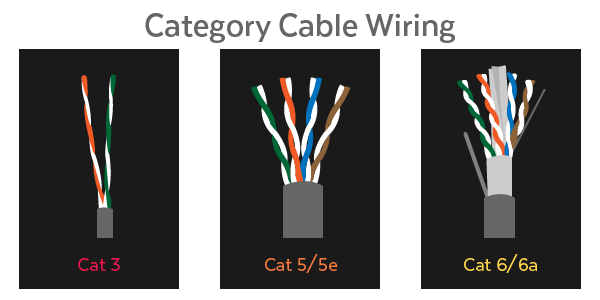28+ Cat 5 Cable Speed Vs Cat5E Photography
.Diffen › technology › consumer electronics › computer hardware. Cat 5e is currently the most commonly used cable, mainly due to its low production cost and support for speeds faster than cat 5 cables.

They cannot support the speeds that new networks.
Compare cat5e and cat6 cable bandwidth, crosstalk, speed, length and cost. Find difficulty in selecting between different types of network cables? Category 5 cable (cat 5) is a twisted pair cable for computer networks. Cat6a cables have double the bandwidth when compared to cat6 cables at 500mhz instead of 250mhz. It has even stricter specifications when it. Though cat5 and cat5e cables are physically similar, category 5e ethernet adheres to more stringent ieee standards. However, most people don't know the main differences between recently, however, new technology has replaced the cat5 cable. Cat5e vs cat6 performance is an intriguing debate, because at their maximum lengths of 100 meters, there isn't much in it. While all these cables look almost identical and can all plug into an ethernet port, there are some it might be possible to get gigabit speeds on a cat5 cable, but it would have to be a shorter cable and even then it wouldn't be guaranteed. Cat 5 ethernet cable succeeded cat 3 and 4 and was designed to satisfy the need for a cable that could support higher speeds. Cat 5 cables support 10/100 mbps which translates into data transfer speed of either 10 or 100 mbps. Cat5e network cables main difference from the cat5 cable is the increasing speed capacity. Cat5 cable is able to transmit data at 10 to 100mbps speeds, while the newer cat5e cable should be able. Cat5e, also known as category 5e or category 5 enhanced, is a network cable standard ratified in 1999. They cannot support the speeds that new networks. While the consumer electronics keep going increasingly wireless, many lans still rely heavily on cat cables to handle all the heavy lifting when it comes to transmitting data. Since 2001, the variant commonly in use is the category 5e specification (cat 5e). Cat 5 vs cat 5e? The chances that you actually do have a cat 5 cable is really small. Cat 5e is currently the most commonly used cable, mainly due to its low production cost and support for speeds faster than cat 5 cables. What is cat 5 cable? Use the cable selector to find the right catx cable for your application. During manufacture cat 6 cables are more tightly wound than either cat 5 or cat 5e and they often have an outer foil or braided shielding. Cat6 cabling also commonly uses the rj45 type connector and therefore looks very similar to the other cables we have already seen. What's are the differences and lets compare the two networking cables and see how they match up against each other! They also further reduce crosstalk interference and provide reliable transmission speeds through a greater length. Cat5, cat5e, and cat6 ethernet cables are widely used in lans. But these cables are already getting short in terms of bandwidth capacity. Cat5 cables were made to support theoretical speeds of 10mbps and 100mbps. In this video i will compare the speed of a cat5 vs a cat5e cable by downloading a file from my nas. You may be able to get gigabit speeds on a cat5 category 6 cabling is the next step up from cat5e and includes a few more improvements.